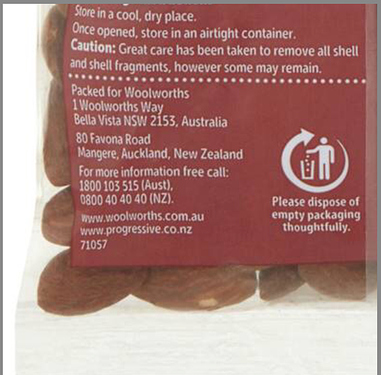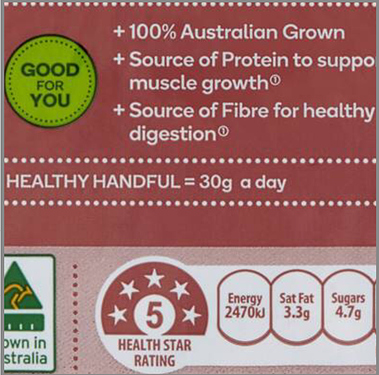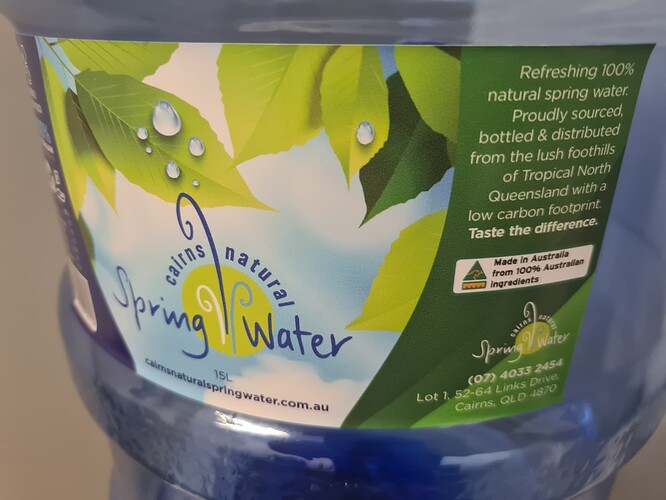There are many other business which do similar. I hope that the ACCC also takes action against these other companies as well. A well known one is Aldi, which historically has used ‘Made in Australia’ when the product is foreign and the processing done in Australia is weighing and packing.
Poorly displayed "Made in . . . " disclosures are some of my choice gripes ;o)
I really think it would be only fair that "Made in . . . " be displayed with a font no smaller than any of the other fonts on a product label. All too often things like "Proudly owned by Australian . . . " are aimed to mislead us consumers about the country of origin of the product in question.
My wife and I are making an effort to avoid products made in that big country up North, only because, more often than not, whilst they are cheap, they tend to be of inferior quality, ultimately only making landfill more massive and our valets less so.
Welcome to the Community @Elmar,
I merged your topic into this existing one that might provide you with some insights into some difficulties regarding ‘made in…’ these days.
Some are cheap, shoddy, and even counterfeit, but I trust you are aware that a great many name branded and luxury products are made ‘up North’ and so state on their labels, and they are anything but cheap or shoddy?
That being written if you search the Community for ‘country origin’ you will find a few allied topics, foods being one of those concerning to the membership.
I suspect that you have set yourself a very difficult mission. The reality today is that due to differences in labour costs, that big country is producing products for a great many Australian firms.
I buy stuff directly from that big country and see exactly the same products from multiple sources there with the only difference being branding. Then I see the very same products locally except that there is local retailer branding. So even when you think you are buying local, you are in fact buying from that big country.
I have to agree with @PhilT. While some products are ‘cheap and nasty’…especially if one is trying to buy the cheapest possible rather than looking for quality, yes there are products which won’t have the same life as better produced products. This is limited to a particular country and affects products any any country where price is the main driver in a purchase decision. Unfortunately as you have outlined, if one is driven solely by price when making a purchase decision, not matter what country is the source of the product, it is possible that these products will contribute to waste management issues through unable to be repaired or through short design lives.
On the other hand, many products one buys is made in or contains and components made in the country in question. Products include cars, electronics, household appliances and the list goes on and these products will most likely be from well known Australian or multinational brands.
Even those consumer products not made in there is most likely contain components which are. This can include small things such as diodes or wires through to main operational parts.
I try and buy Australian products or made in Australia where possible, and where a product isn’t made/produced locally, then look at quality imports. Quality meaning that I don’t discriminate between country of origin, but select the product which is made well, has a good reputation and performance is matched with the price point of the product.
It is worth noting that the country in question also produces some of the highest quality products/components in the world, when there is good quality control oversight and the manufacture isn’t under pressure to cut costs. The same applies in any other country as well.
It seems to be getting more difficult to know for sure what is really Australian and what is not?
I spent some time in Woolworths looking for unsalted roasted fresh nuts. Any variety that was not imported.
As close as I came were Almonds - announced to have been ‘grown in Australia’.
Due to a lack of other detail it’s not evident that they were processed or packaged in Australia. There is a statement in fine print that says,
At best we know they were Packed for Woolworths, location not specified.
Australia is the world’s second largest exporter of Almonds after the USA. Hopefully we do all our own processing and packing in Australia, although?
Looking at Woolies nut products on line the regular fresh produce packaging often has no details as to country of origin or processing. The super expensive Macro ‘Health’ products appear to be the more reliable for country of origin details.
It leaves a lingering doubt as to where our nuts have been, just as locally caught/produced seafood may have been to a Vietnam or Taiwan and back.
Brazil Nuts won’t be Australian, they are not grown here. Other nuts will be variable as to origin and I’m sure when cropping is poor here they will import to make up the shortfall from where ever it can be sourced at the right price. If our Tree Nuts are the prime export then often we import the lesser quality and export ours.
Location or origin is outlined on the Australian content label…it is product of Australia. If it was foreign packed with Australian almonds, the label would have said such. See…
For it to be called Australian grown…
All of the product’s significant ingredients have been grown in Australia; and All or nearly all of the processing has been carried out in Australia.
One often sees products labelled as processed in X country, using Y from Australia. Frozen fish fillets is one that first comes to mind.
“The only nuts that aren’t grown at all in Australia are Brazil nuts as they need the rainforests of the Amazon to grow.”
At the rate that Brazil is destroying the Amazon rainforests, Brazil nuts may be extinct shortly.
That’s reassuring. Many other nut products in the same area had very little detail. Some had a percentage of Australian content EG 15% plus imported ingredients, source not specified, place of processing and packaging not specified. We’ve discussed the ins and outs of where product may be from or processed previously in the Community.
Is the principle of batches changing supply sources a smoke screen for not fully declaring the origins? No need to respond. I’ll comment further if there are gaps in what I turn up next week at the local Woolies.
Not only senseless but useless!
An Australian product with 100% Australian content.
At least there are still some Aussie products with 100% Aussie content.
Who would have thought?

It looks as though this thread has been hijacked from a deceptive labelling discussion into a debate on the virtues or otherwise of water fluoridation. ![]()
Fancy that. Can’t recall that ever happening on this site.
![]()
The referenced posts have been moved into their own topic. Thanks for precipitating it.
Want to have another go at the new topic title? Hint, we are not talking about flour are we?
![]() - fixed.
- fixed.




